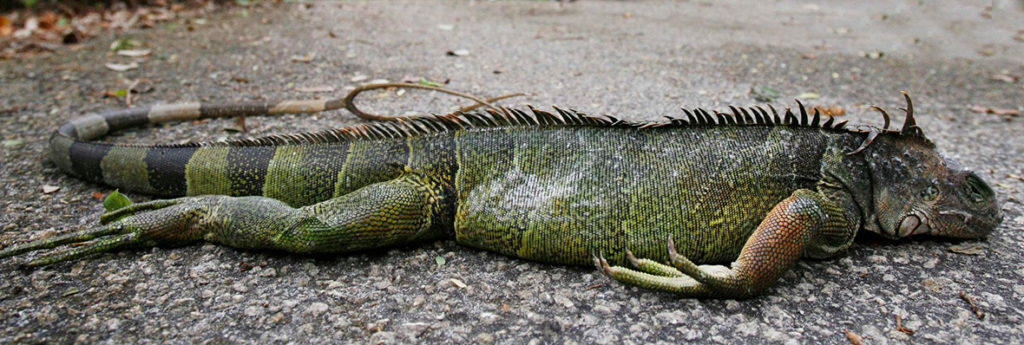More than just leaves were falling this week in South Florida. Chilled iguanas were dropping like large popsicles. The National Weather Service in Miami issued a warning for the region on Twitter on Tuesday, as well as a wind chill advisory for all of South Florida from Tuesday night through Wednesday morning.
“Don’t be surprised if you see iguanas falling from the trees tonight as lows drop into the 30s and 40s,” it cautioned. “Brrrr!”
Iguanas climb trees at night to roost, Ron Magill, communications director for Zoo Miami, told The New York Times in 2018. But when there are low temperatures, “they literally shut down, and they can no longer hold on to the trees.”
“Which is why you get this phenomenon in South Florida that it’s raining iguanas,” he said.
“Even if they look dead as a doornail — they’re gray and stiff — as soon as it starts to heat up and they get hit by the sun rays, it’s this rejuvenation,” Magill said. “The ones that survive that cold streak are basically passing on that gene.”
Iguanas, which can grow to be more than five feet, are not native to South Florida and are susceptible to the cold. Having one fall on you can do some nasty damage.
Their numbers have exploded in recent years, at the same time the region has seen several years of record-breaking heat and mild winters.
The record low for Miami stands at 30 degrees, set on Jan. 22, 1985. And except for 2018, the past few years have been warmer than usual.

